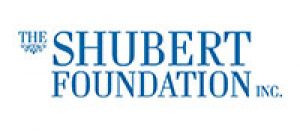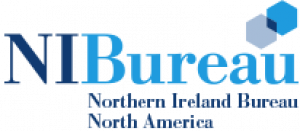Details
Contact
classes@irishartscenter.org
irishartscenter.org/classes
Overview
On March 12, Caitlin Warbelow—an Irish Arts Center fiddle instructor who over the last few years has played in nearly 1500 performances of Broadway’s Come From Away—received notice that Broadway would imminently be closing. She had two and a half hours to pick up anything she might need from the theater for the foreseeable future.
Beto O’Byrne, a co-founder of Radical Evolution, author of 15 full-length plays, and teacher of playwriting at IAC, found out two weeks ago that a project he’s been developing for four years with the legendary El Teatro Campesino—The Corrido of the San Patricios, a musical and theatrical exploration of the story of the Irish immigrant soldiers who defected to fight with Mexico in the Mexican-American War—had canceled its world premiere performances.
James Cleveland, a veteran fiddle teacher at IAC, recently lost a friend and fellow musician to the virus.
Every Irish Arts Center teacher, every New Yorker—and most people around the globe—have their own stories of how, through the current crisis and its range of tragedies and crucial inconveniences, their worlds quickly began to close in. But Irish Arts Center teachers are simultaneously constructing new ways of safely opening a small piece of the world back up—as best as can be done online—for those who might seek the warm sociality of participating in, and learning about, Irish art, culture, and language.
Founded in 1972, and fast approaching 50 years of sharing both traditional and contemporary Irish and Irish American art and culture with New York, IAC has increasingly considered education a fundamental part of its identity and its ability to create community. What began as a volunteer-based program offering a few classes has expanded, in the last couple of decades, into a vibrant, multifaceted, and professionalized program. In its upcoming eight-week online session—which IAC recently announced would be adapted to be taught online—IAC teachers offer 26 courses in fields that also include language, playwriting, and storytelling.
Digitally evoking a classroom’s sense of community, and fluidity, certainly bears its obstacles. As Warbelow anticipates teaching groups of students online for her three fiddle classes at IAC, she’s learning how to navigate aural learning amidst the technical difficulties—namely, the latency—of online video platforms. In the weeks since the stay-at-home order came out, Warbelow has founded Tune Supply (providing work for over 40 trad musicians by offering “personalized performance and instruction delivered digitally for the socially distanced world”). Having taught online for years, she has in the last three weeks become all the more versed in both the limits and deep resonances of digital instruction, performance, and gathering in these times. She has heard from users (nearly 1000 people have been tuning in to live sessions Warbelow has been hosting online) how soul-healing it is to continue to find ways to connect through trad music, even if through a screen.
She explains, “Irish art in particular is based around people being together. With Irish music, we get together in the backs of bars, sit really close together in a corner, and play music. So this moment, and performing and teaching online, is particularly odd for Irish musicians—but there are so many ways I’m seeing people figuring out how to do it.”
Instructor and founding former member of Cherish the Ladies Siobhan Egan-Moore already has plenty of experience with the often-humorous act of managing a classroom chock-full of bodhrán players. Working through all that percussion in a single Zoom chat—as people’s family members in adjacent rooms try to watch TV—will require even more comic flair. “I’m completely useless with tech stuff, so the students are going to have to bear with me,” she says. “Though I find that the majority of my students are the same—I’ve had students who didn’t even have cell phones. So we’re all going to be in the same boat!”
A teacher at IAC since 2002, Egan-Moore has already adapted to changing technologies over the decades—and recalls having first introduced students to tunes with CDs that she would have to switch out after every track. Since deeply listening to tunes—and having full awareness of specific musicians’ spins on them—is integral to playing bodhrán in any ensemble, increased access to different interpretations of traditional tunes across digital platforms has been immensely helpful.
Beto O’Byrne, who’s currently isolating in Brooklyn while teaching online acting classes for LaGuardia Community College, and Siobhán Ní Chiobháin—a teacher of Irish language and award-winning creative producer who left New York weeks ago to quarantine herself near her family in a seaside Gaeltacht (Irish-speaking region) in County Kerry—both speak to this as an opportunity to be more deliberate in the materials they’re presenting.
“In the past, maybe I would scribble on paper or a chalkboard something that came to mind in the moment,” says O’Byrne, who first became connected to IAC while looking for a step dancer to participate in a workshop for The Corrido of the San Patricios—and has developed a playwriting class that uses examples he's selected from the riches of modern and contemporary Irish drama. “I think I’ll have to come in with PowerPoint slides prepped, and everyone will have to come in having already read each other’s material, because you run into the issue of latency when reading dialogue aloud. But a lot of the class will translate easily to being online.”
“For language, there’s such a wealth of material in short films, media, Tweets, and memes, and I’ve already been sharing that,” says Ní Chiobháin. “I just need to make sure now that I share it well before the class so people have a chance to review them. I think it’s a good thing—I’ll be more organized!”
This moment—when convening in person is a temporary danger—bears a heavy weight within an institution that across its history has celebrated the tight entwinement of art and community. But it’s this history, and the fact that many teachers have found something singular in it and chosen to be a central part of it for many decades, that drives the desire to partake in sustaining a sense of community even in the most isolating times.
Teachers like James Cleveland (who himself began playing fiddle as an adult, learning much of his repertoire through classes at IAC before becoming a teacher in 1999) and Dan Hunt (a former naval officer and merchant seaman whose relationship with IAC began 30 years ago when he took an interest in learning Irish folk dance) have become integral to IAC’s enduring yet open, inclusive, and ever-expanding community.
Hunt says, “Generally with traditional Irish dance and music, there are lots of classes for children and teenagers—but very few teachers want to take on an adult. The Irish Arts Center sets itself apart in being one of the few places where adults who take an interest in Irish art suddenly or want to go back to their roots can pursue that. All along, since the mid-1970s, it’s been doing this.”
Cleveland, who was an actor before he became a fiddle player, says, “Fiddle has become a huge part of my life, and it’s filled that part that acting used to fill—it’s taken over. I started at 30—and you can start at any age. The joy of playing and the joy of art in itself is immeasurable and shouldn’t be thought of as ‘it’s not going to be a career.’ Which is one thing about Irish art—everybody does it; you go to a party and everybody contributes something, contributes a song, a poem, a few dance steps, a tune on the fiddle, and it’s part of the art. And, yes, some become virtuosos—but the art is in all of us, and what the Irish Arts Center does is celebrate that.”
Cleveland recalls improving vastly after his fourth year playing, when a fellow IAC teacher encouraged him to go and play at Dempsey’s Tuesday Night Trad Session, where, as is the tradition with Irish music sessions, people of all levels can play together. Thinking back on that, he notes, “Yes we can play and practice on our own, but we do need to come together. And even though now these classes are going to be virtual, it’ll be some sort of coming together.”
Newer teachers are equally drawn to the IAC community for the organization’s panoramic presentation of Irish art that embraces the contemporary—and artistic innovation and cultural inclusion—even when nodding towards tradition. Says Ní Chiobháin, “I’m so proud of where Ireland is in the moment. We passed the Marriage Equality Act and we repealed the 8th. Ireland has changed, humor has changed, and we continue to push a lot more boundaries. The Irish Arts Center features traditional performances but also gives time and space to artists who are doing something different—reflecting the Ireland of the present.”
In New York’s uncertain present, as James Cleveland notes, people find themselves looking “to the arts for solace and for sanity and for beauty and entertainment,” and IAC teachers are adapting to figure out how to best be “together” to share, learn, and experience it. As we wait for the moment when community can exist again in its physical form, we can continue to seek and build it, at least, through the joy of shared interest and shared time.
—Moze Halperin, spring 2020
For more information about Irish Arts Center's online education program, click here.

























